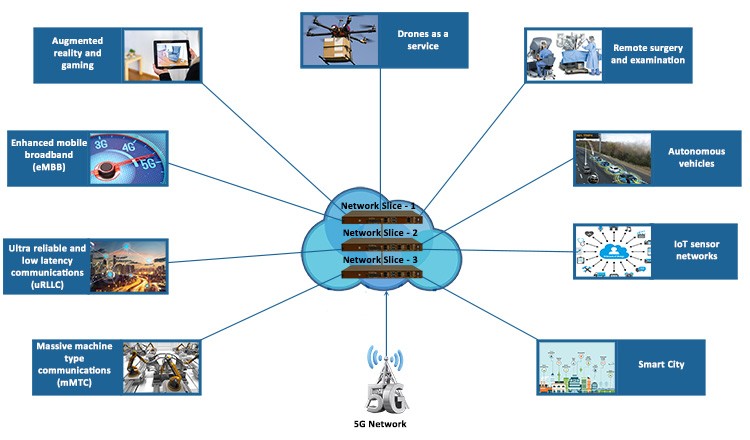Intelligent Network Slicing for 5G and Beyond Networks
- (5G Network Slicing and Applications - eInfochips)
- Overview
Intelligent network slicing for 5G and beyond uses AI and machine learning (ML) to automate and optimize the creation, management, and security of network slices.
By analyzing large datasets, AI/ML enables the network to dynamically allocate resources, ensure quality of service (QoS), and maintain robust security for diverse services, from enhanced mobile broadband to IoT and mission-critical applications.
1. How it works:
- Automation: AI/ML automates the complex lifecycle of network slices, from design and deployment to monitoring and management, which is crucial for handling the massive number of slices envisioned for future networks.
- Optimization: Intelligence is used to map service requirements to network functions and resources, enabling dynamic allocation of resources based on real-time traffic and demand.
- Security: AI-driven security orchestration can provide fine-grained, automated security management for each slice and the overall network infrastructure, addressing security concerns in a decentralized and autonomic manner.
- Data-driven decisions: The system relies on processing vast amounts of data to provide simple solutions to complex problems, leading to improved performance and efficiency.
2. Benefits:
- Scalability: Handles a massive and growing number of network slices without manual intervention.
- Profitability: Enables operators to create and deliver profitable, customized services for various industries.
- Efficiency: Optimizes resource utilization and network performance.
- Enhanced security: Provides a more robust and automated security framework for individual slices and the entire network.
3. Challenges:
- Complexity: Implementing AI and integrating it with existing infrastructure requires significant technical expertise and investment.
- Data requirements: AI models require large, realistic datasets for training, and collecting this data is a challenge in itself.
- Ethics and privacy: Analyzing vast amounts of user data for optimization raises concerns about data privacy and the ethical use of AI.
4. Key concepts
- Network Function Virtualization (NFV): Enables the creation of network services using virtualized network functions, which is a core enabler for network slicing.
- Security as a Service (SECaaS): A framework that leverages cloud-based security services to provide enhanced security for network slices.
- Zero-touch management: The goal is to have networks that can manage themselves, with AI/ML handling tasks autonomously and securely.
[More to come ...]


